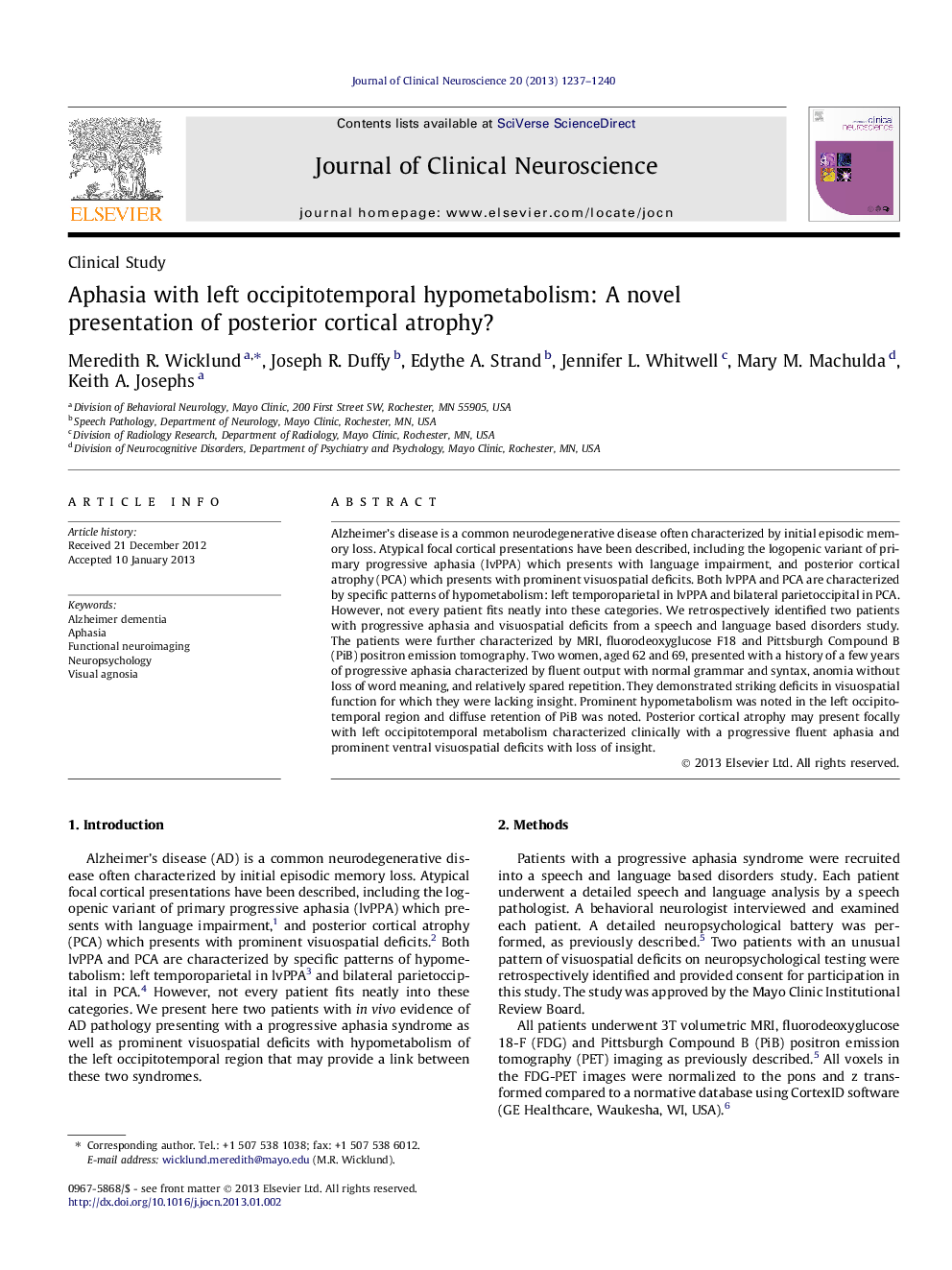| Article ID | Journal | Published Year | Pages | File Type |
|---|---|---|---|---|
| 3059766 | Journal of Clinical Neuroscience | 2013 | 4 Pages |
Alzheimer’s disease is a common neurodegenerative disease often characterized by initial episodic memory loss. Atypical focal cortical presentations have been described, including the logopenic variant of primary progressive aphasia (lvPPA) which presents with language impairment, and posterior cortical atrophy (PCA) which presents with prominent visuospatial deficits. Both lvPPA and PCA are characterized by specific patterns of hypometabolism: left temporoparietal in lvPPA and bilateral parietoccipital in PCA. However, not every patient fits neatly into these categories. We retrospectively identified two patients with progressive aphasia and visuospatial deficits from a speech and language based disorders study. The patients were further characterized by MRI, fluorodeoxyglucose F18 and Pittsburgh Compound B (PiB) positron emission tomography. Two women, aged 62 and 69, presented with a history of a few years of progressive aphasia characterized by fluent output with normal grammar and syntax, anomia without loss of word meaning, and relatively spared repetition. They demonstrated striking deficits in visuospatial function for which they were lacking insight. Prominent hypometabolism was noted in the left occipitotemporal region and diffuse retention of PiB was noted. Posterior cortical atrophy may present focally with left occipitotemporal metabolism characterized clinically with a progressive fluent aphasia and prominent ventral visuospatial deficits with loss of insight.
